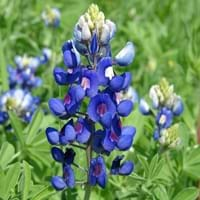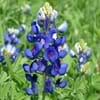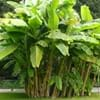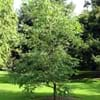Life Span
Perennial
Perennial
Type
Flowering Plants
Grass
Origin
Mediterranean, North Africa, Northern America
North America, Canada, Mexico
Types
Anthony Peak Lupine, Silver Bush, Garden Lupine, Spider Lupine, Adonis Lupine
Bigleaf hydrangea, Hortensia, Smooth hydrangea, Oakleaf hydrangea, Annabelle
Habitat
Pine barrens, Sandy areas
Forest edges, Hillside, Woods
USDA Hardiness Zone
3-7
Not Available
Sunset Zone
1a, 1b, 2a, 2b, 3a, 3b, 4, 5, 6, 7, 14, 15, 16, 17
1a, 1b, 2a, 2b, 3a, 3b, 4, 5, 6, 7, 8, 9, 10, 11, 14, 15, 16, 17, 18, 19, 20, 21, 22, 23
Habit
Upright/Erect
Upright/Erect
Flower Color
Blue, Pink, White
Blue, Dark Purple, Light Purple, Red, White
Flower Color Modifier
Not Available
Bicolor
Fruit Color
Not Available
Not Available
Leaf Color in Spring
Light Green
Green, Light Green, Blue Green, Gray Green
Leaf Color in Summer
Green
Light Green
Leaf Color in Fall
Green
Red, Green, Orange, Blue Green, Gray Green, Bronze
Leaf Color in Winter
Not Available
Tan, Sandy Brown
Leaf Shape
Oblovate
Oblovate
Plant Season
Summer
Spring, Summer, Fall, Winter
Sunlight
Full Sun, Part sun
Full Sun, Partial Sun
Type of Soil
Loose, Moist
Clay, Loam, Sand
The pH of Soil
Slightly Acidic
Acidic, Neutral, Alkaline
Soil Drainage
Well drained
Average
Bloom Time
Late Spring, Summer
Early Summer, Summer, Late Summer
Tolerances
Not Available
Pollution, Soil Compaction
Where to Plant?
Ground
Container, Ground
How to Plant?
Seedlings
Seedlings, Stem Planting
Plant Maintenance
Medium
Medium
Watering Requirements
Form a Soil ring to water efficiently, Keep the ground moist but not water-logged, Requires a lot of watering, Water in morning to avoid prompting diseases
Not Available
In Summer
Lots of watering
Drought Tolerant, Average Water
In Spring
Moderate
Moderate
In Winter
Average Water
Average Water
Soil pH
Slightly Acidic
Not Available
Soil Type
Loose, Moist
Not Available
Soil Drainage Capacity
Well drained
Not Available
Sun Exposure
Full Sun, Part sun
Not Available
Pruning
Prune ocassionally
Remove damaged leaves, Remove dead branches, Remove dead leaves
Fertilizers
All-Purpose Liquid Fertilizer
All-Purpose Liquid Fertilizer
Pests and Diseases
Aphids, Fusarium wilt, Root rot, Thripes
Red blotch
Plant Tolerance
Drought
Pollution, Soil Compaction
Flower Petal Number
Single
Single
Foliage Texture
Medium
Fine
Foliage Sheen
Matte
Not Available
Invasive
No
Not Available
Self-Sowing
Yes
Not Available
Attracts
Bees
Bees, Flies
Allergy
Abdominal pain, Asthma, Nausea, Swelling in the face, Vomiting
Chest tightness, Diarrhea, Dizziness, Nausea, Vomiting
Aesthetic Uses
Showy Purposes
Not Available
Beauty Benefits
Not Available
Not Available
Edible Uses
Yes
Not Available
Environmental Uses
Air purification
Air purification
Medicinal Uses
Anthelmintic, Diuretic, Treatment of ulcers
Fever, Kidney problems, Urinary tract problems
Part of Plant Used
Flowers, Seeds
Flowers, Root
Other Uses
Showy Purposes, Used as Ornamental plant, Used for fragrance
Not Available
Used As Indoor Plant
No
Not Available
Used As Outdoor Plant
Yes
Yes
Garden Design
Bedding Plant, Container, Feature Plant, Foundation, Rock Garden
Not Available
Botanical Name
Lupinus
PANICUM virgatum 'Northwind'
Common Name
Hybrid Lupine
Northwind Switchgrass, Switchgrass
In Hindi
वृक संयंत्र
Hydrangea
In German
lupine
Hortensie
In French
usine de lupin
Hortensia
In Spanish
planta de lupino
Hortensia
In Greek
φυτό λούπινο
υδραγεία
In Portuguese
tremoço planta
Hortênsia
In Polish
łubin roślin
Hortensja
In Latin
Plinio herba
Hibiscus
Phylum
Magnoliophyta
Not Available
Class
Magnoliopsida
Not Available
Order
Fabales
Not Available
Family
Fabaceae
Not Available
Genus
Lupinus
Not Available
Clade
Not Available
Not Available
Tribe
Not Available
Not Available
Subfamily
Faboideae
Not Available
Number of Species
Not Available
Properties of Lupine and Northwind Switchgrass
Wondering what are the properties of Lupine and Northwind Switchgrass? We provide you with everything About Lupine and Northwind Switchgrass. Lupine doesn't have thorns and Northwind Switchgrass doesn't have thorns. Also Lupine does not have fragrant flowers. Lupine has allergic reactions like Abdominal pain, Asthma, Nausea, Swelling in the face and Vomiting and Northwind Switchgrass has allergic reactions like Abdominal pain, Asthma, Nausea, Swelling in the face and Vomiting. Compare all the properties and characteristics of these two plants. Find out which of these plant can be used as indoor plant. If you are interested to decorate your house and garden, find out aesthetic uses, compare them and select the plant which will beautify your surrounding. Along with beautification, try comparing medicinal and edible uses of Lupine and Northwind Switchgrass and you can choose the plant having best and most benefits.
Season and Care of Lupine and Northwind Switchgrass
Season and care of Lupine and Northwind Switchgrass is important to know. While considering everything about Lupine and Northwind Switchgrass Care, growing season is an essential factor. Lupine season is Summer and Northwind Switchgrass season is Summer. The type of soil for Lupine is Loose, Moist and for Northwind Switchgrass is Clay, Loam, Sand while the PH of soil for Lupine is Slightly Acidic and for Northwind Switchgrass is Acidic, Neutral, Alkaline.
Lupine and Northwind Switchgrass Physical Information
Lupine and Northwind Switchgrass physical information is very important for comparison. Lupine height is 2.95 cm and width 1.50 cm whereas Northwind Switchgrass height is 150.00 cm and width 90.00 cm. The color specification of Lupine and Northwind Switchgrass are as follows:
Lupine flower color: Blue, Pink and White
Lupine leaf color: Light Green
Northwind Switchgrass flower color: Blue, Dark Purple, Light Purple, Red and White
- Northwind Switchgrass leaf color: Green, Light Green, Blue Green and Gray Green
Care of Lupine and Northwind Switchgrass
Care of Lupine and Northwind Switchgrass include pruning, fertilizers, watering etc. Lupine pruning is done Prune ocassionally and Northwind Switchgrass pruning is done Remove damaged leaves, Remove dead branches and Remove dead leaves. In summer Lupine needs Lots of watering and in winter, it needs Average Water. Whereas, in summer Northwind Switchgrass needs Drought Tolerant, Average Water and in winter, it needs Average Water.





